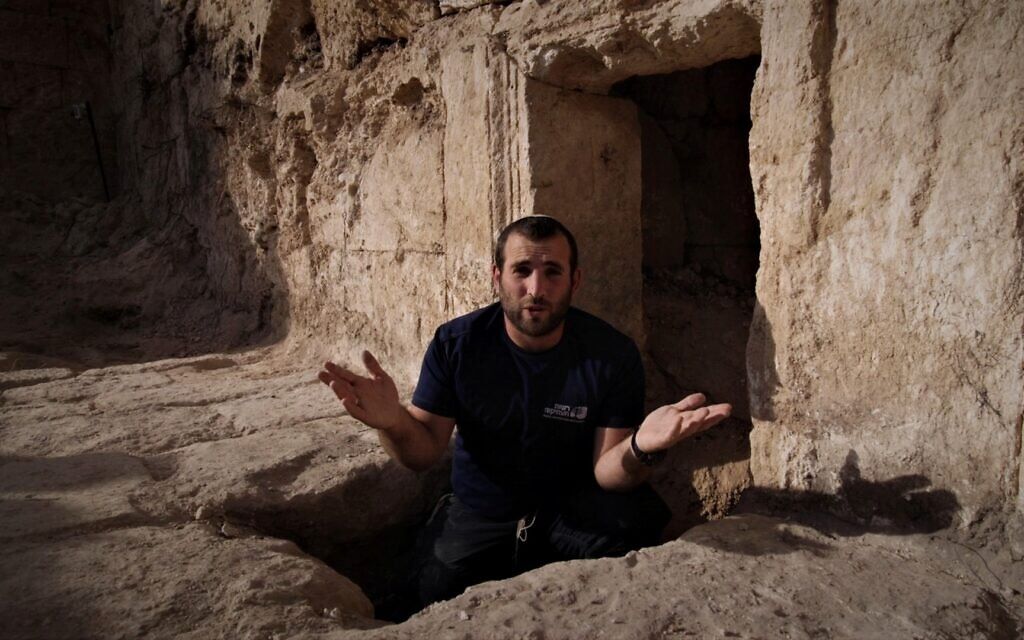
Recent excavations in Israel will soon open to the public a tomb that’s venerated as the resting place of Jesus’s midwife, Salome.
Found in 1982 by antiquities robbers, excavations have always been ongoing, but recent breakthroughs have proved the site to be far more grandiose than previously expected, and much of the tomb will soon be open to pilgrims and tourists alike.
A mosaic-floored courtyard spanning 350 square meters (almost 4,000 square feet) counted chief among the latest finds, and it was decorated with soaring arches and intricate stone carvings.
The team from the Israeli Antiquities Authority also found what appears to be a merchant’s stall for selling small oil lamps to pilgrims—the kinds that archaeologists have dug up by the dozens inside the tomb, and that would have lighted their penitent footsteps in the dark interior.
The earliest chamber dates to the Second Temple Period, between 500 BCE and 70 CE.
“According to a Christian tradition, Salome was the midwife from Bethlehem, who was called to participate in the birth of Jesus,” said IAA archaeologist Zvi Firer.
MORE ARCHAEOLOGY NEWS: Historians Stunned: Uzbekistan Nomads Supplied a Third of the Bronze Used Across Ancient Mediterranean
“She could not believe that she was asked to deliver a virgin’s baby, and her hand became dry and was only healed when she held the baby’s cradle.”
The outermost rooms of the tomb date to the Byzantine period, or between 300 to 600 CE, making it a little avant-garde for Salome’s time, but Firer has a theory.
In the tomb’s excavations which turned up relics as recently as last Tuesday, stone funerary boxes called ossuaries were uncovered in the older chambers, which Firer believe could have had the name Salome or “Schlomitt” on them, which fooled the early Christian pilgrims into believing it was the midwife of legend.
These were common names for Jewish people living in the area during the Second Temple Period.
However there are some inscriptions in Greek that seem to dedicate the whole complex to “Holy Salome” so perhaps there’s more to the legend after all.
The site, located in the Lachish region in central Israel, is soon to be part of a 60 mile tourist trail running along the historic spine of Israeli history, a sort of Valley of the Kings, but for the Jews rather than the Pharaohs.
SHARE This Amazing Archaeology News On Social Media…




















Joseph & Mary were welthy enough to have a midwife? Is this mentioned in any early writings? Definitely not in the Bible itself?
Replying to MarkB – Great questions! Joseph and Mary were not wealthy and were far from home at the time of Jesus’ birth.
The Bible says in Luke, Chapter 2, verse 7, “And she brought forth her firstborn son, and wrapped him in swaddling clothes, and laid him in a manger; because there was no room for them in the inn.”
The wording – ‘she brought forth her firstborn son’ alludes that it was a job Mary did by herself. Swaddling clothes were essentially rags ( so again, no great wealth) Mary placed Jesus in a feeding trough because the town was crowded due to the first Roman census being taken and she had to birth her son in a barn.
Unlike in the book of Exodus chapter 1, verse 15, where the two Hebrew midwives, Shiphrah and Puah, were named and honored for their attempts to prevent genocide – there is no named midwife in Luke, and it would be extremely unlikely that the Bible would omit a key character in the birth of Christ.
A couple comments for Mahwah88: First, RE: “The wording – ‘she brought forth her firstborn son’ alludes that it was a job Mary did by herself.” We need to remember that these books in the Bible have gone through MULTIPLE translations that would not be as exact as the scenario you are describing. Translating sentences from Aramaic, to Hebrew, to English and you will LOSE a lot of nuance.
Second, you say “it would be extremely unlikely that the Bible would omit a key character in the birth of Christ.” Small groups of people made up of individuals with agendas (for instance, an agenda to get more followers in your church or persuade your followers) CHOSE what to put in the book you know as The Bible. For instance, the entire book of Thomas was taken OUT. So we need to remember these were storytellers creating a beautiful narrative to presumably inspire people.
The stories of Jesus weren’t even written down until 50-150 years later, depending on the author. So there is no news reporting in those chapters.